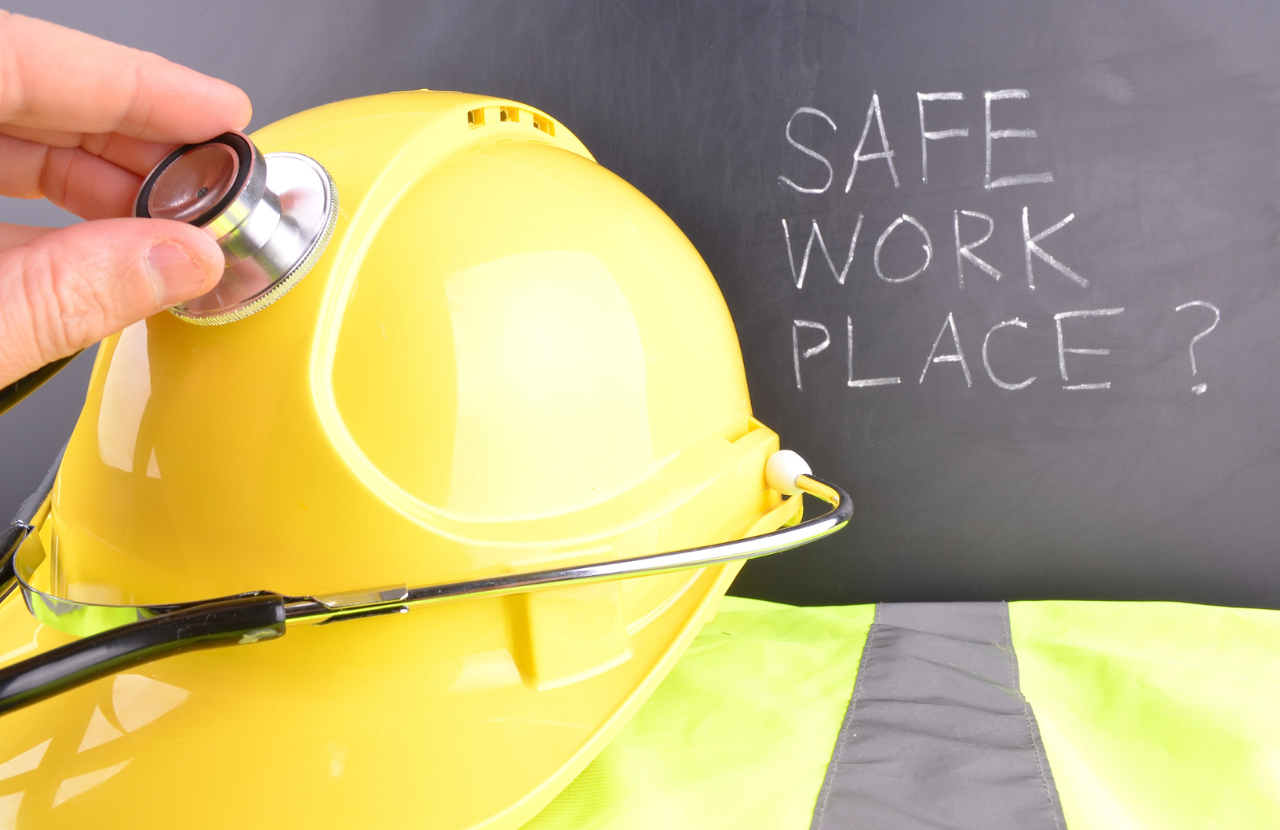
A safe system of work is vital for managing risks where hazards cannot be fully eliminated, reducing the likelihood of incidents and helping to ensure consistency across teams. Understanding when a safe system of work is required, what it should cover, and how it is applied in practice is essential for managing higher-risk activities safely.
In this guide we discuss where safe systems of work add value and provide practical examples to illustrate how they are used in real workplace situations.
What is a safe system of work?
A safe system of work is a formal, documented way of carrying out a task so that risks are controlled and people are protected from harm. It sets out exactly how the work must be done, who is responsible for each step, and what controls, equipment, and behaviours are required to complete the activity safely.
A safe system of work is not a single document or form, but the specific combination of procedures, resources, instructions, supervision, and competence needed to manage a task safely from start to finish.
In practice, a safe system of work shows workers the correct and safe way to perform a task where hazards cannot be removed entirely, and additional controls are needed to prevent injury.
What is the difference between a risk assessment and a safe system of work?
A risk assessment and a safe system of work serve different functions. The risk assessment comes first. During this stage, hazards are identified, the level of risk is evaluated, and the control measures needed to keep that risk as low as reasonably practicable are selected.
The safe system of work then documents how those controls will be applied in practice, setting out the exact steps, responsibilities, equipment and behaviours required to complete the task safely.
In practice, this means:
- The risk assessment identifies the danger, who may be harmed, and what controls are necessary.
- The safe system of work describes exactly how the task must be performed to make sure those controls are consistently applied.
For example, a risk assessment may identify the need to isolate machinery before maintenance. The safe system of work then sets out the exact steps to isolate, lock out, verify zero energy, conduct the work, and re-start safely.
If a risk assessment is the decision-making process that selects the controls, the safe system of work is the practical instruction manual that ensures those controls are used correctly in real working conditions.
What are safe systems of work used for?
Safe systems of work are especially valuable in higher risk tasks or situations where hazards are dynamic, complex, or require more than one control measure.
Safe systems of work are commonly used in:
- Machinery operations – to explain how machinery must be set up, operated, isolated, cleaned, and shut down safely to prevent entanglement, crushing, or contact with moving parts.
- Working at height – to define how access equipment is selected, inspected, used and secured, and how fall prevention or fall arrest controls are applied.
- High-risk maintenance, inspection and repair activities – to control the sequence of actions for isolating equipment, managing stored energy, and verifying the task is safe before work begins.
- Hot work – to set out the controls required to prevent fires or explosions when welding, soldering, cutting or using other heat sources.
- Confined space entry – to specify entry procedures, atmospheric testing, rescue arrangements, communication methods and permit requirements before and during the activity.
- Chemical handling and COSHH-related tasks – to detail how substances are stored, transferred, mixed, applied and disposed of safely, including PPE requirements and emergency response steps.
Safe system of work examples
Safe systems of work depend on the task and level of risk involved. Below are some practical examples that illustrate how safe systems of working can be applied in specific situations:
A written method statement for working on live equipment
A method statement is a safe system of work that sets out the exact sequence for completing a high-risk task. When working on live equipment, it details the controls required, who is authorised to undertake the work, the PPE needed, and the emergency arrangements. This ensures the task is completed using approved methods and prevents workers from improvising in a way that could increase risk.
A traffic management plan to separate pedestrians and vehicles
A traffic management plan is a safe system of work that explains how people and vehicles interact on a site. It may include segregated walkways, one-way systems, physical barriers, banksman requirements, speed control measures and signage. This structured approach prevents collisions and removes ambiguity about priority routes and safe movement.
A documented procedure for changing gas cylinders on a forklift
Replacing gas cylinders involves stored energy and flammable materials. A documented procedure is a safe system of work that breaks the task into clear steps: isolating the cylinder, removing connections safely, checking for leaks, securing the new cylinder correctly, and confirming safe operation before use. This approach controls the risk of fire, explosion or mechanical failure.
A permit-to-work for confined spaces including atmospheric testing
Working in a confined space requires a formal safe system of work. A permit-to-work sets out entry conditions, atmospheric testing requirements, communication and supervision responsibilities, and the rescue arrangements that must be in place before anyone enters. This ensures the space is safe before entry and remains safe throughout the task.
Developing a safe system of work
When developing a safe system of work, the employer must systematically identify the key elements below to ensure the task is carried out safely. If the employer lacks the required competence, they should appoint a competent person to assist them.
- The task and its scope – break down the task clearly: what is being done, where, how often, and by whom. This may involve watching the task being carried out, reviewing existing procedures, and speaking to experienced workers who understand how the task is performed.
- The hazards involved – identify what could cause harm at every stage of the task. This should include obvious hazards (for example, moving machinery, chemicals, manual handling) and secondary hazards that may arise unexpectedly (such as poor lighting, pressure to rush, unexpected public access). Reviewing accident records, near misses and industry alerts will also help identify hazards.
- Who may be harmed – consider every group that could be affected: the people doing the task, others working nearby, contractors, visitors, cleaners, delivery drivers or members of the public. Consider competence, training levels, language barriers, lone working, and whether additional support or supervision is needed.
- The most suitable control measures and how they interact – choose controls using the hierarchy of control, prioritising elimination and engineering controls wherever possible before PPE. Confirm how each control relates to the others — for example, isolating power before guarding or using fall prevention before harness-based arrest systems. Test the controls in practice to ensure they work together.
- How the task must be carried out in sequence – write the safe operating method as clear, logical steps. Use plain language and avoid assumptions or jargon. State what must be done first, what checks are required before starting, what must happen during the activity, and what must happen at the end (for example shutdown, inspection, housekeeping). Where relevant, include diagrams or checklists.
- How responsibilities and communication are managed – specify who approves the safe system of work, who supervises it, and how it is briefed to workers (such as toolbox talks, training sessions, permit-to-work). Include how changes will be communicated, who has authority to stop the work, and how the procedure will be reviewed or updated when circumstances change.
In practice, organisations often use a safe system of work template to ensure each of these points is consistently addressed and nothing critical is overlooked when documenting the method.
Provide your team with essential Health and Safety Awareness training
Safe systems of work are one of the core topics covered in our Health and Safety Awareness course, alongside hazard identification, risk assessments, unsafe acts and conditions, and incident reporting. The course helps reinforce safe behaviours, strengthen compliance, and build confidence to manage workplace risks.
Health and Safety Awareness can be tailored to your organisation and delivered via eLearning, face-to-face at a venue of your choice or through a virtual classroom. Find out more on our website, or contact our friendly team on 0203 011 4242 / info@praxis42.com

Adam Clarke
Managing Director (Consulting)
